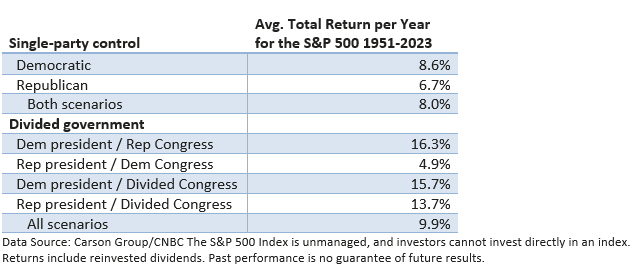

- From a political perspective, there is no discussion about raising the 21% corporate tax rate, nor is there talk of increasing taxes on the wealthy or taxing unrealized capital gains. Moreover, bullish sentiment is supported by an expected deregulatory push next year.
The bears, however, point to today’s high valuations, the recent rise in bond yields, and expectations for fewer rate cuts in 2025.
- From a political perspective, some concerns that sweeping new tariffs could offset bullish tailwinds from tax policy and deregulation, as higher levies on imports could raise consumer prices at home and invite retaliation against U.S. exporters.
Over an extended period, the economy, corporate profits, inflation, and Federal Reserve policy have been the primary factors influencing the direction of the stock market, not politics. And profits, inflation, and Fed policy are determined by economic performance.




